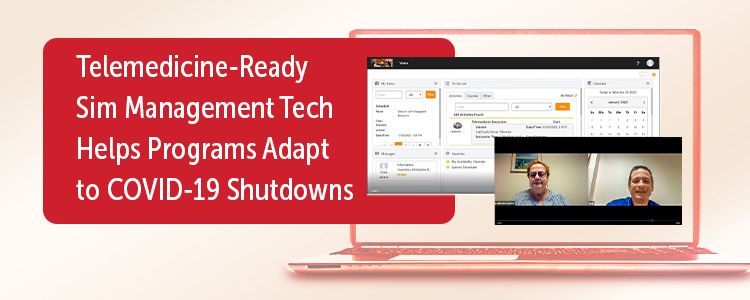The COVID-19 pandemic has disrupted educational systems around the world. Many campuses have been forced to temporarily close or operate at reduced capacity, leading administrators and faculty scrambling to quickly adapt their curricula, modify existing programs, and develop new ones which achieve the same high-quality educational opportunities in virtual and hybrid environments.
Here’s how DeSales University in Center Valley, PA faced this challenge in March 2020—and successfully maintained its high volume simulation curriculum via online learning.
Serving a combination of undergraduate and graduate nursing, physical therapy, and physician assistant program students, the school’s the Healthcare Simulation Center features a variety of clinical practice areas enhanced with state-of-the-art simulation management technology as well as high and low-fidelity mannequins, and is enhanced with a pool of nearly 50 standardized patients (SPs).
Jason Konzelmann, BS, M.Ed., NR-P, CHSE, Director of Healthcare Simulation, early on realized the need to rapidly pivot from in-person to video-based learning platforms. Initially, DeSales’ campus wide Zoom account was selected as the virtual platform to make this happen as it provided a group room and breakout rooms that could have specific SPs and students assigned to them.
But Zoom proved inadequate in managing the center’s high-volume online learning needs. After encountering numerous problems while running a Zoom-based virtual intraprofessional event in partnership with Samford University in Birmingham, AL for both schools’ physical therapy students, Konzelmann worked to deploy a better solution: SIMULATIONiQ™ Enterprise Telemedicine. He says, “All of the issues we encountered during the event with Samford would have been easily and completely eliminated had we had SIMULATIONiQ Telemedicine. It was, for us, the nail in the coffin of staying with Zoom versus investing in the Telemedicine component from SIMULATIONiQ.”
SIMULATIONiQ Telemedicine has enabled DeSales to merge and manage its combined virtual, online, live, and mobile training curricula, equipping them to sustainably overcome barriers and meet their educational goals in the COVID-19 era—and beyond. While the school is now back on campus, the simulation program is primed to return to virtual learning as needed.
Ready to modernize your healthcare simulation training?
EMS’ SIMULATIONiQ™ Enterprise and SIMULATIONiQ™ Enterprise Cloud telemedicine-ready simulation management platforms help institutions modernize their training programs to merge and manage virtual, online, live, and mobile training curricula. Leverage the latest technology to conduct end-to-end telemedicine training across multiple disciplines, enabling your learners to develop critical care delivery skills and empowering them to meet the demands of delivering medical services within remote and virtual environments.

